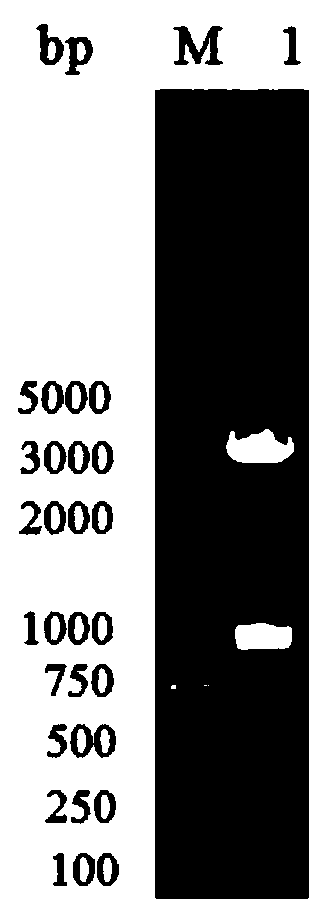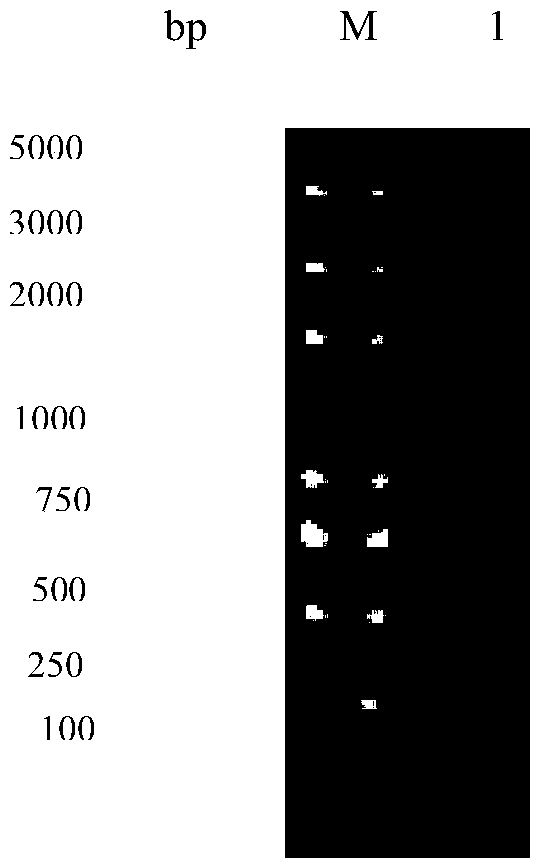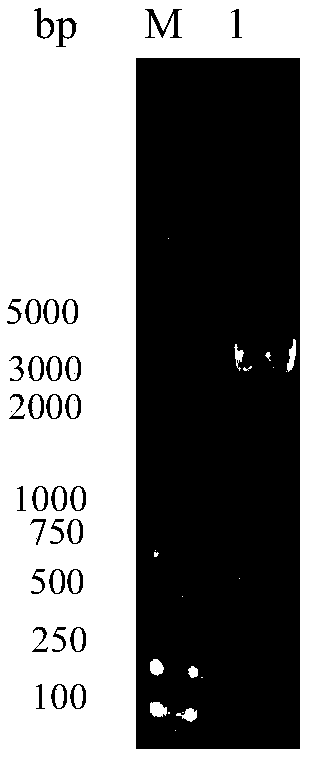Vector and method for eukaryotic soluble expression of polar-tube glycoprotein of Nosema bombycis
A technology of silkworm microparticles and glycoproteins, which is applied in chemical instruments and methods, botanical equipment and methods, biochemical equipment and methods, etc., can solve the problem of glycosylation modification characteristics of natural polar tube proteins and the inability to glycosylation modification , Difficulty in extracting and purifying polar tube protein, etc., to achieve the effect of simple separation and purification technology
- Summary
- Abstract
- Description
- Claims
- Application Information
AI Technical Summary
Problems solved by technology
Method used
Image
Examples
Embodiment 1
[0024] Embodiment 1, pSLI / V5-His expression plasmid vector construction containing IE2 promoter
[0025] According to the OpIE2 and the multiple cloning site region sequence (1-947bp) on the pIZ / V5-His vector, a pair of primers with AscI restriction sites were designed, and the pIZ / V5-His vector DNA was used as a template for PCR amplification. The upstream primer is: 5'-ggcgcgccggatcatgatgataaacaat-3' (SEQ ID NO.1), the downstream primer is: 5'-ggcgcgcctgttctttcctgcgttatcc-3' (SEQ ID NO.2), and the amplification condition is 94°C pre-denaturation for 5 minutes; 94 Denaturation at °C for 30 seconds, annealing at 56°C for 30 seconds, extension at 72°C for 1 minute, a total of 30 cycles; finally extension at 72°C for 10 minutes, and storage at 4°C to obtain the insert fragment OpIE2-MCS. The OpIE2-MCS fragment and the intermediate vector pSLfa1180fa were respectively digested with the restriction endonuclease AscI, transformed into Escherichia coli after ligation, positive clone...
Embodiment 2
[0026] Embodiment 2, the amplification of NbPTP1 gene of Bombyx mori microspore
[0027]The PCR amplification of the polar tube glycoprotein NbPTP1 gene of Bombyx mori was based on the genome DNA of Bombyx mori, and the genome DNA of Bombyx mori was extracted by CTAB method. According to the genome sequence of M. mori, combined with NCBI sequence alignment, Primer 5.0 software was used to design primers, and an appropriate restriction site was selected in the multiple cloning site of the pSLI / V5-His expression vector. The upstream primer contained a BamHI restriction site : 5'-cgcggatccatgagaattagatccttcaaa-3' (SEQ ID NO.3), the downstream primer contains an XhoI restriction site: 5'-ccgctcgaggcgtttagcacacatggattatt-3' (SEQ ID NO.4), the amplification condition is 94°C pre-denaturation 4 Minutes; denaturation at 94°C for 30 seconds, annealing at 58°C for 30 seconds, extension at 72°C for 90 seconds, a total of 30 cycles; last extension at 72°C for 10 minutes, and storage at 4°...
Embodiment 3
[0029] Embodiment 3, construction of the recombination vector of the Bombyx mori microspore pole tube glycoprotein NbPTP1 gene containing the Metallothionein promoter
[0030] The present invention uses pMT / Bip / V5-His A to transfect the vector, and adopts a two-step cloning method to carry out vector construction: the PCR product of NbPTP1 gene is cut and recovered, connected with the vector pMD19-T vector, transformed into Escherichia coli, and screened positive Cloning, after sequencing verification, it shows that the cloned fragment is the target fragment, and there is no amino acid mutation, and the construction of the subcloning vector can be carried out in the next step. The pMD19-NbPTP1 recombinant plasmid was digested with BglII and XhoI respectively, and the NbPTP1 gene was recovered; the pMT / Bip / V5-His A plasmid was digested with BglII and XhoI, and the pMT / Bip / V5-His A vector fragment was recovered, and the recovered NbPTP1 The gene was connected with the pMT / Bip / V5...
PUM
 Login to View More
Login to View More Abstract
Description
Claims
Application Information
 Login to View More
Login to View More - R&D
- Intellectual Property
- Life Sciences
- Materials
- Tech Scout
- Unparalleled Data Quality
- Higher Quality Content
- 60% Fewer Hallucinations
Browse by: Latest US Patents, China's latest patents, Technical Efficacy Thesaurus, Application Domain, Technology Topic, Popular Technical Reports.
© 2025 PatSnap. All rights reserved.Legal|Privacy policy|Modern Slavery Act Transparency Statement|Sitemap|About US| Contact US: help@patsnap.com



